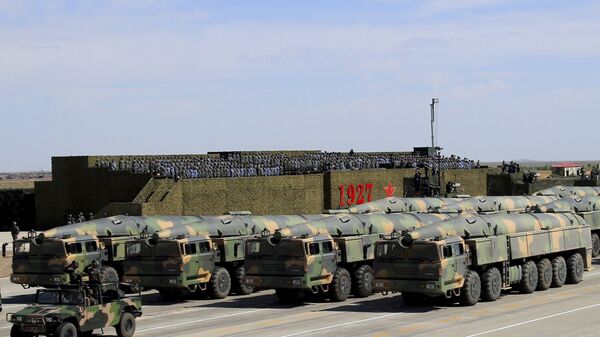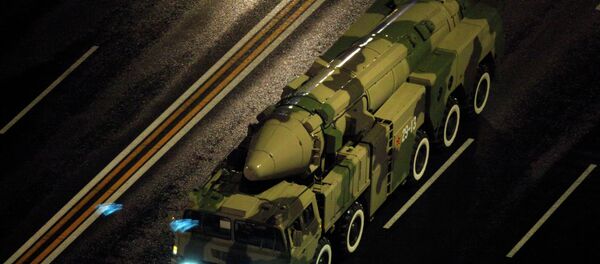The development of the JL-3 missile was initially reported on several years ago. It’s expected that the new missile will be part of the advanced nuclear-powered submarine project 096.
Earlier this month, Chinese websites published pictures showing the project 032 submarine, the world’s largest conventionally powered submarine, undergoing tests. The submarine underwent re-fitting work at a shipyard in Dalian. In Dalian, the submarine received new silos capable of housing a larger missile.
Vasily Kashin, a military expert and senior research fellow at the Institute for Far Eastern Studies of the Russian Academy of Sciences, spoke to Sputnik about the possible role of the JL-3 missile for China’s strategic interests.
Kashin underscored that the development of the new ICBM is dictated by the fact that current Chinese potential for nuclear deterrence is insufficient.
"Despite the fact that the JL-2 has a relatively decent operational range (7,400-8,000 km, according to different sources), its capability to deter the United States is limited. China’s nuclear submarines operate in the South China Sea. At the same time, they are likely to face problems while leaving China’s territorial waters due to the activities of the US and Japanese naval forces," Kashin told Sputnik China.
According to Kashin, the JL-2 missile would be unable to reach the continental US in the event of a military conflict.
"They could be used against US allies and American bases in Asia, but their role in deterrence is minor. In order to boost its sea-based strategic nuclear forces, China needs a missile with a range of 11,000-13,000 kilometers, preferably with a multiple independently targetable reentry vehicle," Kashin pointed out.
At the same time, Kashin suggested that the development of the JL-3 missile will be much less troubled.
"The difference between the JL-3 and JL-2 are not as major as that between the JL-2 and the JL-1, China’s first submarine-based ballistic missile. China will use its experience in missile development to avoid repeating its previous mistakes and speed up the creation of a new missile," Kashin concluded.



